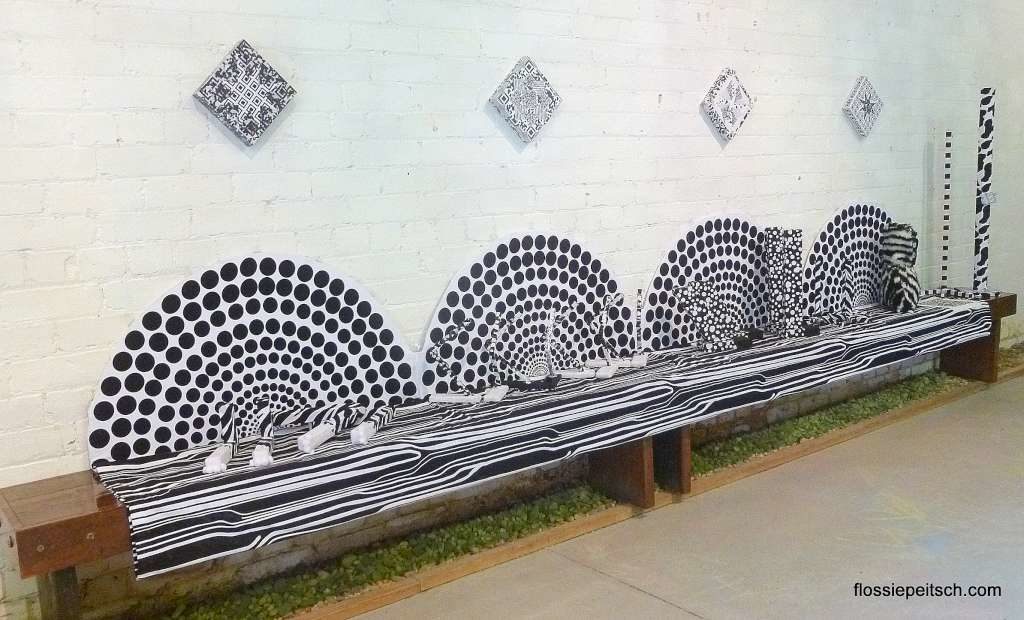FLOSSIE PEITSCH
HABITAT: Not White and Black
ESSAY By Dr Ewen Jarvis, Curator
Yering Station Main Gallery and Matt’s Bar Gallery, 29 July – 13 September, 2016 artgallery@yering.com www.yering.com
Part 2 of 3
Peitsch has come to use almost exclusively mediums drawn from every-day life. When Penny Mulvey (Peitsch, 2006, p 41) remarked, in an interview about art and motherhood, that Peitsch’s work seemed to revolve around the every-day, Peitsch’s response revealed the degree to which her work connects with and furthers a feminist agenda in working to re-contextualise creativity as it is manifested in domestic settings:
Women’s crafts have been disregarded in the art world. We look upon the ability to paint and sculpt as the ‘real’ skills. But many women do very artistic things in their own homes, calling them ‘cottage crafts’; this is quite peculiar because these skills are wonderful in their own right. It seems that it is only when the crafts are over one hundred years old and people no longer know how to do them that we recognise them as uniquely important and precious.
By employing and recasting domestic materials and inserting references to digital realms, alternate ways of seeing are forced upon the viewer at each turn. BACKDROP A and B mimic sideshow tents at a carnival beneath which all manner of novelties are arranged for the consumption of the curious. In HABITAT the carnival tent contains a display of forty-six animal feet varying in size and shape. Strongly stylized with no attempt made to render the feet realistically, the collection is pure fantasy, but with a message or at least a suggestion that we could benefit from considering the point of view of creatures other than ourselves. These beguiling sculptural works that inhabit the same world as HOUSEPET dominate the gallery space with a silent language as playful as it is uncanny.

